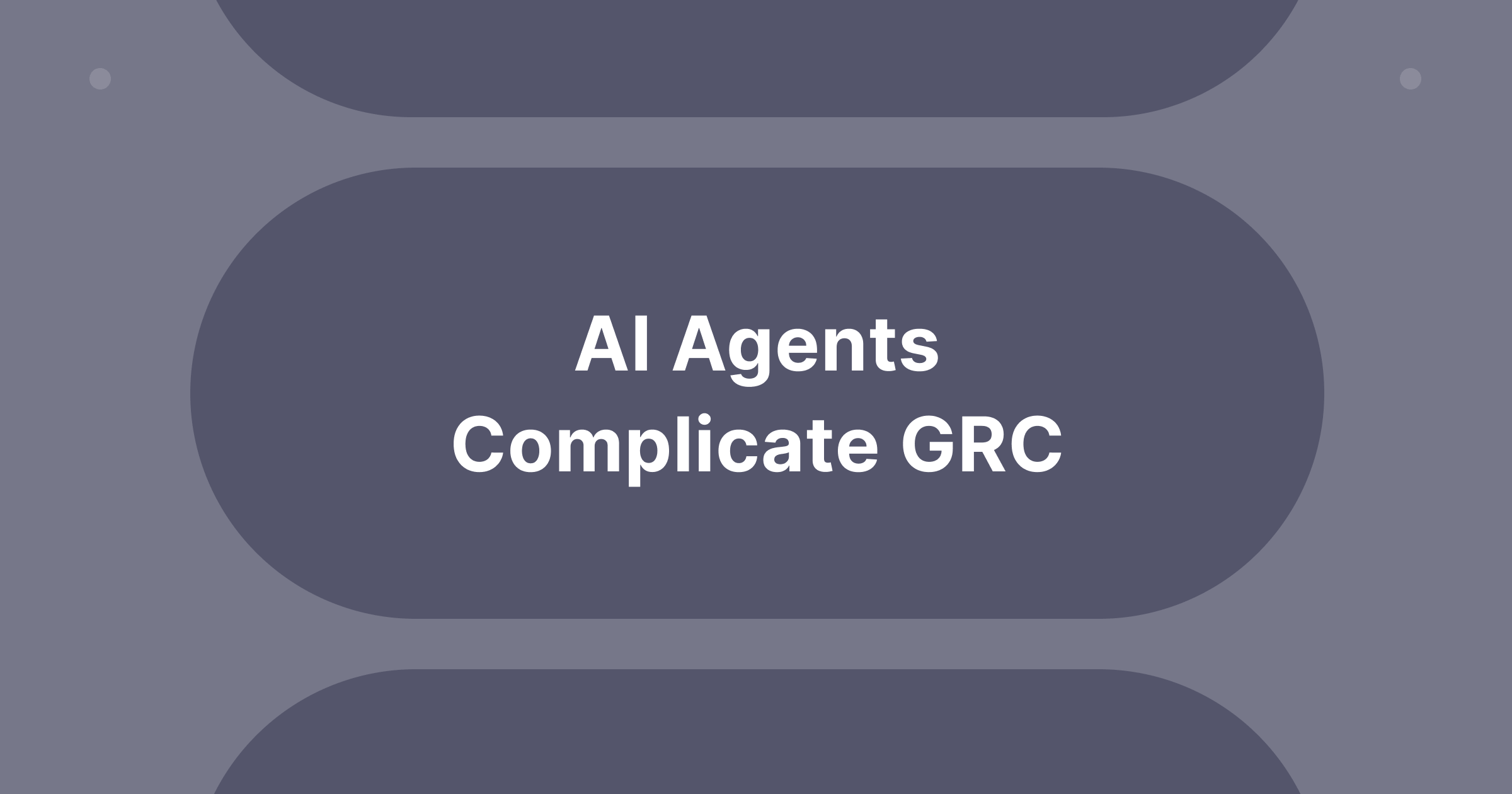AI Agents Complicate GRC
Artificial intelligence is rapidly embedding itself into enterprise workflows. From marketing automation to code generation, “AI agents” are proliferating across organizations—often outside of IT’s oversight. While these tools accelerate productivity, they create a blind spot that makes compliance with frameworks like SOC 2, ISO 27001, and FedRAMP dramatically harder.

The challenge isn’t just that AI agents are new. It’s that they blur traditional boundaries of data control, creating hidden sub-processors and uncontrolled data flows. For CISOs, compliance officers, and security leaders, this presents a fundamental governance problem: if you don’t know which AI services are touching your data, you cannot prove compliance.
The Sub-Processor Problem in the Age of AI
At the core of SOC 2, ISO, and FedRAMP requirements is a principle of visibility and accountability. Organizations must be able to:
- Identify third-party vendors and sub-processors handling sensitive data.
- Classify data and ensure only authorized flows.
- Demonstrate monitoring, controls, and remediation for risks.
AI agents disrupt all three.
- Unregistered Sub-Processors
Many AI tools are consumed as SaaS services or APIs that employees adopt without procurement review. When an employee feeds sensitive data into ChatGPT, Jasper, or another AI agent, that vendor becomes a de facto sub-processor. SOC 2 requires full documentation of such vendors, ISO 27001 requires risk assessment of third parties, and FedRAMP mandates contractual and operational oversight. Shadow AI tools make compliance teams fail this baseline requirement. - Unclassified and Uncontrolled Data Flows
SOC 2 and ISO emphasize data classification and integrity, while FedRAMP extends to data sovereignty and auditability. But when AI agents ingest sensitive inputs (customer PII, regulated healthcare data, or even source code), organizations often lack a record of what was shared, with whom, and where it resides. Without visibility into data flows, organizations cannot prove adherence to principles of confidentiality, privacy, or integrity. - Geographic Data Sovereignty
FedRAMP and ISO 27001 both require strict control of data residency. Yet most AI tools route data through opaque, global infrastructures. Without the ability to track where AI agents send data, organizations risk unintentional cross-border transfers—potential violations that can derail certifications or lead to regulatory fines.
Compliance Frameworks at Risk
- SOC 2 (Trust Services Criteria): The “Confidentiality” and “Privacy” principles hinge on tracking third-party processors and ensuring only authorized use of sensitive data. Shadow AI usage directly undermines these criteria.
- ISO 27001 (Annex A controls): Controls such as A.15 (Supplier Relationships) and A.8 (Asset Management) require organizations to identify all third-party data processors and monitor their compliance. AI agents bypass these controls entirely when they’re adopted without IT involvement.
- FedRAMP: With its stringent requirements for third-party risk management, data sovereignty, and continuous monitoring, FedRAMP compliance is nearly impossible if AI data flows are invisible. Agencies must ensure subcontractors meet equivalent security requirements—a task that’s infeasible if AI usage is undiscovered or undocumented.
Why an AI Data Firewall is Essential
The scale and speed of AI adoption means manual processes won’t solve the problem. Spreadsheets of vendors, static procurement reviews, or occasional audits cannot keep pace with employees spinning up AI tools daily. What organizations need is a system that:
- Automatically discovers AI agents in use (registered and unregistered).
- Maps and classifies data flows between applications and AI services.
- Enforces governance policies in real time, including blocking, redacting, or redirecting sensitive data before it leaves the organization.
- Provides audit-ready evidence of which vendors handle data, what data they receive, and where it goes.
Without such controls, compliance efforts remain incomplete and fragile.
Who Must Champion This Initiative?
The responsibility for AI governance cuts across several roles:
- CISOs and Security Leaders must own visibility into AI data flows as part of enterprise security architecture.
- GRC and Compliance Officers must ensure AI usage aligns with SOC 2, ISO, and FedRAMP obligations.
- Data Privacy Officers must manage risks of unauthorized processing or cross-border data transfers.
- Procurement Leaders must address the fact that AI services often bypass traditional vendor onboarding.
Together, this coalition needs to recognize AI agents as a new class of sub-processor—and treat them with the same scrutiny as cloud providers, SaaS vendors, and outsourcing partners.
The Cost of Ignoring the Problem
Failing to address AI sub-processor risk is not just a theoretical issue. The consequences are already playing out:
- Regulatory penalties: GDPR/CCPA fines can reach tens of millions for unauthorized data transfers.
- Contractual non-compliance: Customers increasingly demand SOC 2 or ISO certification; failure to pass audits can block deals or trigger penalties.
- Operational risk: Data leaks via AI agents can expose source code, customer data, or intellectual property.
- Insurance challenges: Cyber risk insurance payouts are increasingly denied when AI data mishandling is involved.
In short: organizations that ignore AI governance risk not just compliance failures but reputational, financial, and operational damage.
Conclusion
AI agents are not just productivity tools—they are hidden sub-processors. They complicate compliance with SOC 2, ISO 27001, and FedRAMP by making it nearly impossible to track vendors, classify data, and ensure sovereignty. To remain compliant and resilient, enterprises must adopt technologies that automatically discover, classify, and govern AI data flows.
The organizations that act now—championed by CISOs, compliance leaders, and procurement—will preserve trust, safeguard data, and stay ahead of regulators. Those that don’t may find their next SOC 2 audit, ISO certification, or FedRAMP authorization derailed by a quiet AI agent their employees adopted last quarter.

